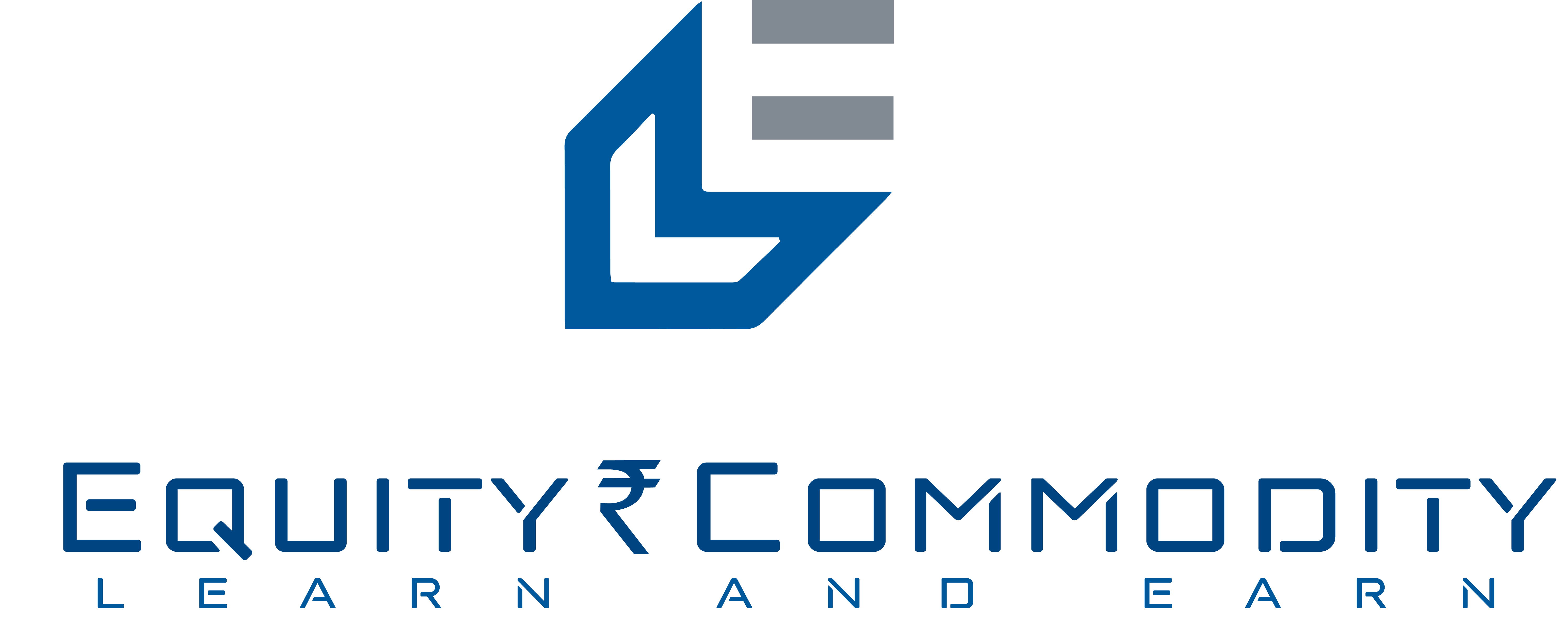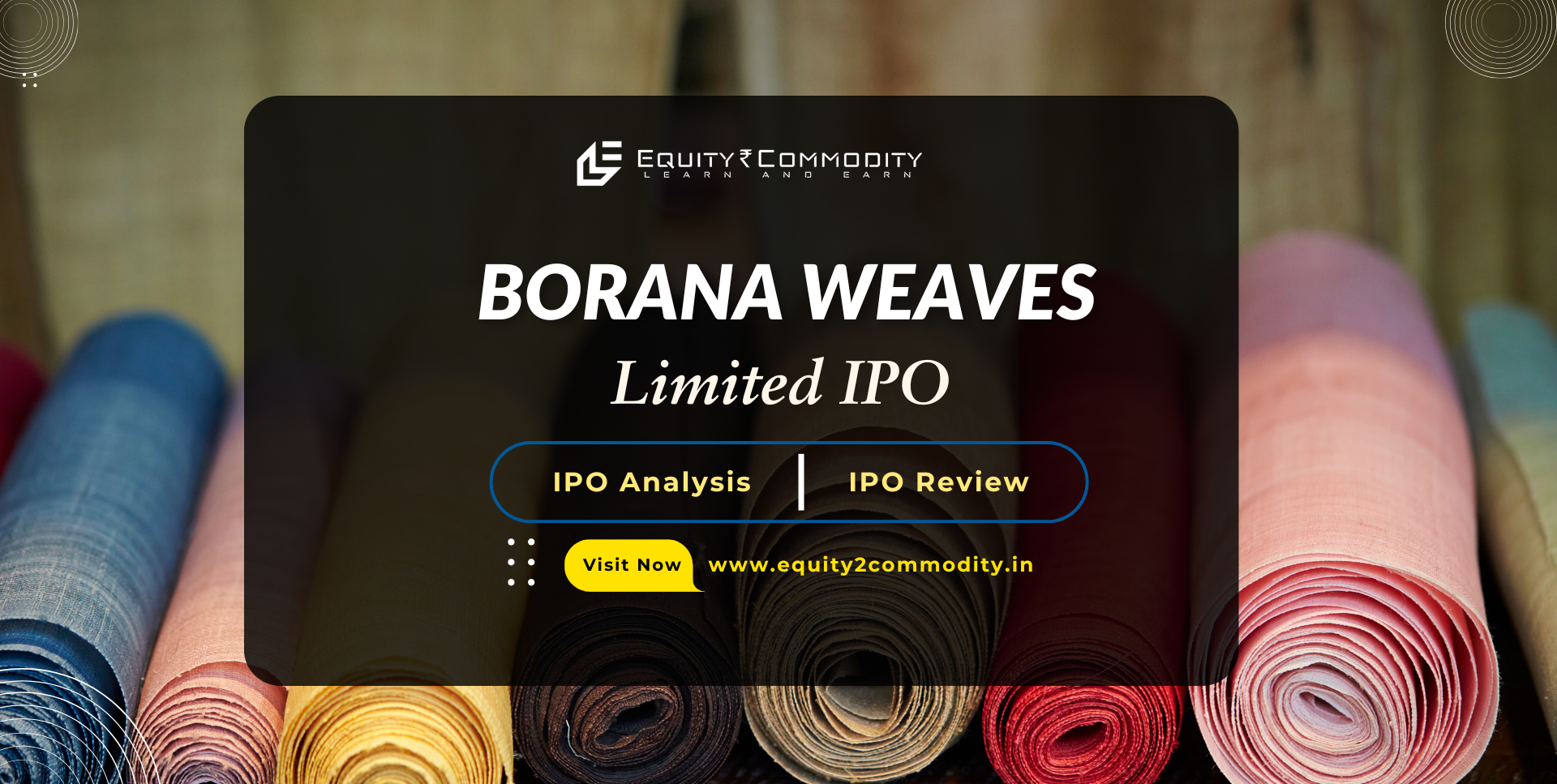The Borana Weaves IPO is a book-built issue worth ₹144.89 crore, consisting entirely of a fresh issue of 67.08 lakh shares. The IPO opens for subscription on May 20, 2025, and closes on May 22, 2025. The price band is set at ₹205 to ₹216 per share.
Borana Weave IPO Details & Timeline
- IPO Open Date: May 20, 2025
- IPO Close Date: May 22, 2025
- Listing Date: May 27, 2025
- Total Issue Size: ₹144.89 Cr
- Fresh Issue: ₹144.89 Cr
- IPO Price Band: ₹205 to ₹216 per share
- Lot Size: 69 shares
- Issue Type:Book Built Issue IPO
Timeline
| Event | Date |
|---|---|
| IPO Opening Date | May 20, 2025 |
| IPO Closing Date | May 22, 2025 |
| Allotment Finalization | May 23, 2025 |
| Initiation of Refunds | May 26, 2025 |
| Credit of Shares to Demat | May 26, 2025 |
| IPO Listing Date | May 27, 2025 |
About Borana Weaves Limited
Company Overview:
Borana Weaves Limited is an India-based company primarily engaged in the manufacturing and processing of synthetic grey fabrics (unbleached fabrics made from synthetic yarn) and also in the twisting and texturizing of yarn, specifically Partially Twisted Yarn (PTY). Incorporated in 2014, the company operates its manufacturing facilities in Surat, Gujarat, a major textile hub in India. They focus on catering to the demand for synthetic fabrics used in various downstream applications within the textile industry.
Core Business:
- Manufacturing of Synthetic Grey Fabrics: This forms the primary revenue stream for Borana Weaves. They produce a range of unbleached fabrics made from synthetic fibers like polyester and viscose. These grey fabrics are then typically processed further (bleached, dyed, printed) by other textile players to create the final consumer products.
- Twisting and Texturizing of Yarn (PTY): The company also undertakes yarn processing, specifically twisting and texturizing of Partially Twisted Yarn. This process modifies the properties of the yarn, such as its texture, bulk, and elasticity, making it suitable for weaving into different types of fabrics.
Market Position:
- Niche Player in Synthetic Grey Fabrics: Borana Weaves operates in the synthetic textile manufacturing sector, with a specific focus on the upstream segment of producing grey fabrics. While the overall textile industry is large and competitive, their specialization in synthetic grey fabrics could position them as a key supplier to downstream processors.
- Presence in a Major Textile Hub (Surat): Being located in Surat provides them with access to a well-established ecosystem of raw material suppliers, processing units, and a skilled workforce within the textile industry.
- Absence of Direct Listed Competitors (Claimed): The company has stated the absence of direct listed competitors in India or overseas in their IPO documents. This could suggest a relatively focused segment they operate in, but it also means a lack of readily available benchmarks for investors.
Future Outlook:
- Expansion Plans: The primary objective of the IPO is to finance the establishment of a new manufacturing unit in Surat. This expansion indicates the company’s intent to increase its production capacity for grey fabrics, suggesting a positive outlook on future demand.
- Growing Synthetic Fiber Industry: The synthetic fiber industry in India is expected to continue growing, driven by factors like cost-effectiveness, durability, and versatility of synthetic fabrics in various applications (apparel, home textiles, industrial textiles). This growth could fuel demand for Borana Weaves’ products.
- Increasing Wallet Share & Customer Base: The company aims to increase its business with existing customers and expand its customer base, indicating a strategy for organic growth alongside capacity expansion.
- Potential in Technical Textiles: The company intends to leverage its water jet loom technology to explore opportunities in the technical textiles segment, which is a growing area with specialized applications and potentially higher margins.
Challenges:
- Intense Competition in the Broader Textile Industry: While direct listed competitors might be absent, Borana Weaves still operates within the larger, highly competitive textile manufacturing landscape, facing pressure from numerous unlisted players and integrated textile mills.
- Dependence on Key Suppliers: Reliance on specific suppliers for raw materials (yarn) without long-term agreements could pose a risk if supply disruptions or price volatility occur.
- Customer Concentration Risk: A significant portion of their revenue is currently derived from customers based in Gujarat, and the absence of long-term contracts with them creates a potential risk if these relationships change.
- Geographic Concentration Risk: Their operations are heavily concentrated in the Surat region. Any adverse events (natural disasters, economic downturn specific to the region, etc.) could significantly impact their business.
- Regulatory and Licensing Risk: Establishing a new manufacturing unit involves obtaining various approvals and licenses, and any delays or issues in this process could impact their expansion plans.
- Pricing Pressure: As a supplier of grey fabrics to downstream processors, Borana Weaves might face pricing pressure from its customers, especially in a competitive market.
Objective
- Finance the cost of establishing a new manufacturing unit in Surat, Gujarat to expand grey fabric production capacity.
- Fund incremental working capital requirements.
- General corporate purposes.
Borana Weaves : Weighing the Pros and Cons
Pros:
- Strong Revenue Growth: The company has shown impressive revenue growth in recent fiscals.
- No OFS: The entire IPO proceeds will go towards the company’s growth initiatives and working capital.
- Niche Market: Absence of direct listed competitors could provide an advantage.
- Operational Strengths: Integrated manufacturing facilities with advanced machinery.
- Institutional Interest: A significant portion (75%) is reserved for QIBs.
Cons:
- Limited Retail Allocation: Only 10% of shares are reserved for retail investors, potentially reducing allotment chances.
- Niche Market: Lack of listed peers makes direct comparison challenging for investors.
- IPO Pricing: The upper price band implies a P/E multiple that might be considered expensive by some.
- Customer Concentration Risk: High revenue dependence on Gujarat-based customers without long-term contracts.
- Geographic Concentration Risk: Operations heavily reliant on the Surat region.
- Regulatory and Licensing Risk: Potential issues in obtaining necessary approvals for the new unit.
So,How Does Borana Weaves IPO Fare in Terms of Financials ?
Borana Weaves- Financial Data
| Period Ended | 31 Dec 2024 | 31 Mar 2024 | 31 Mar 2023 | 31 Mar 2022 |
| Assets | 149.67 | 137.05 | 74.98 | 31.90 |
| Revenue | 215.71 | 199.60 | 135.53 | 42.36 |
| Profit After Tax | 29.31 | 23.59 | 16.30 | 1.80 |
| Net Worth | 76.55 | 47.39 | 24.11 | 1.81 |
| Reserves and Surplus | 56.87 | 47.66 | 24.07 | 1.80 |
| Total Borrowing | 54.03 | 69.10 | 38.89 | 27.31 |
| Amount in ₹ Crore | ||||
Review:
- Significant Growth in Assets: Borana Weaves has shown substantial growth in its asset base over the periods presented. Assets increased from ₹31.90 crore in March 2022 to ₹149.67 crore by December 2024. This indicates significant expansion and investment by the company.
- Strong Revenue Growth: Revenue has also witnessed impressive growth. It increased from ₹42.36 crore in March 2022 to ₹215.71 crore by December 2024. This demonstrates a strong demand for the company’s products and its ability to scale its operations. The revenue growth between March 2023 and March 2024 is particularly noteworthy.
- Consistent Profitability Growth: Profit After Tax (PAT) has shown a consistent upward trend, increasing from a modest ₹1.80 crore in March 2022 to ₹29.31 crore by December 2024. This highlights improving profitability and operational efficiency.
- Substantial Increase in Net Worth: The company’s Net Worth has grown remarkably, from a very low base of ₹1.81 crore in March 2022 to ₹76.55 crore by December 2024. This signifies a strengthening financial position, likely driven by retained earnings from increasing profits and potentially capital infusion.
- Growth in Reserves and Surplus: The Reserves and Surplus have followed a similar growth trajectory as the Net Worth, indicating the accumulation of profits over time.
- Fluctuating Total Borrowings: Total Borrowings have fluctuated. They increased significantly between March 2022 and March 2024, peaking at ₹69.10 crore. However, they have decreased to ₹54.03 crore by December 2024. This suggests the company might be managing its debt levels, although the increase in earlier periods warrants attention regarding the company’s leverage
Borana Weaves IPO Valuation :
| KPI | Values |
|---|---|
| ROE | 49.45% |
| ROCEMay | 27.42% |
| RoNW | 49.77% |
| PAT Margin | 11.85 |
| Price to Book Value | 9.09 |
SWOT Analysis of Borana Weaves IPO
Strengths: Specialization in synthetic grey fabric, integrated manufacturing, strong financial track record, experienced promoters, advanced technology.
Weaknesses: Dependence on key suppliers without long-term agreements, operates in a competitive industry, high dependence on Gujarat-based customers and operations.
Opportunities: Growing synthetic fiber industry, increasing wallet share with existing customers, expanding customer base, leveraging water jet loom technology for technical textiles.
Threats: Intense competition, pricing pressure, dependence on major suppliers, potential disruptions in Gujarat (natural disasters, etc.), risk in obtaining approvals for new unit.
Competitive Analysis: Borana Weaves IPO
The competitive landscape for Borana Weaves IPO needs to be analyzed at a few levels:
1. Direct Listed Competitors:
- As per the Red Herring Prospectus (RHP) and various IPO analyses, Borana Weaves claims that there are no direct listed competitors in India or overseas that are solely focused on the manufacturing of unbleached synthetic grey fabrics and PTY yarn.
- This could be a unique selling proposition, suggesting a niche market. However, it also means a lack of readily available benchmarks for investors to compare valuation and performance.
2. Broader Textile Industry:
- Borana Weaves operates within the larger Indian textile industry, which is highly fragmented and competitive. This includes numerous unlisted players, small and medium-sized enterprises (SMEs), and larger integrated textile mills.
- These players may produce similar or substitutable products, even if they are not exact “like-for-like” listed competitors. Competition can arise in terms of price, quality, and product range.
- Key players in the broader Indian textile market include companies like:
- Arvind Ltd.
- Welspun India Ltd.
- Trident Ltd.
- Raymond Ltd.
- Alok Industries Ltd.
- KPR Mill Ltd.
- Page Industries Ltd. (primarily garments but a large textile consumer)
- Siyaram Silk Mills Ltd.
- And many others across the spinning, weaving, processing, and garmenting segments.
3. Synthetic Grey Fabric Manufacturers (Unlisted):
- While no direct listed peers might exist, there are numerous unlisted manufacturers of synthetic grey fabrics in India, particularly concentrated in textile hubs like Surat (where Borana Weaves is based), Bhiwandi, and other regions.
- These companies would be Borana Weaves’ primary competitors in terms of product offering and market share within the unbleached synthetic grey fabric segment. Identifying and analyzing these unlisted players is crucial for a comprehensive understanding of the competitive intensity. Resources like industry associations and market research reports on the synthetic fabric sector could provide insights into these players.
4. Yarn Manufacturers (PTY):
- In the PTY (Partially Twisted Yarn) segment, Borana Weaves competes with other yarn manufacturers and texturizing units. This is a more commoditized market with several players supplying yarn to weavers and knitters.
Key Competitive Factors in the Textile Industry:
- Price Competitiveness: The textile industry, especially in upstream segments like grey fabrics and yarn, is often price-sensitive.
- Quality and Consistency: Buyers demand consistent quality of fabrics and yarn for their downstream processes.
- Product Range and Customization: Offering a diverse range of fabrics or the ability to customize products can be a competitive advantage.
- Raw Material Sourcing and Cost Management: Efficient sourcing of raw materials (synthetic fibers, yarn) and managing production costs are critical for profitability.
- Technology and Efficiency: Utilizing modern machinery and efficient production processes can lead to better quality and cost-effectiveness.
- Relationships with Downstream Players: Strong relationships with fabric processors, garment manufacturers, and other end-users are important for securing orders and market access.
Borana Weaves IPO GMP
- Grey market premium as on 16-05-2025 = ₹ /Share
Disclaimer:
- IPO Grey Market Premium (Borana Weaves IPO GMP) mention is valid for the specific date as mentioned in the header.
- We are not buying and selling IPO forms on IPO Grey Market.
- Don’t decide to subscribe to an IPO just based on the initial price, as it can change before the listing.Subscribe only considering Fundamentals of the companies.
Borana Weaves IPO
🔴 Live Subscription Status 🔴
20/05/2025 10:00 AM
| | NO OF SHARES OFFERED | Day 1 | Day 2 | Day 3 |
| Qualified Institutional Buyers(QIBs) | ||||
| Non Institutional Investors(NIIs) | ||||
| Retail Individual Investors(RIIs) | ||||
| Employees | ||||
| Total |
FINAL TAKEAWAY
✅ May Apply
HOW APPLY IPO USING DEMAT,UPI, ASBA, NET BANKING ETC ?
How to apply IPO using Bhim UPI app or any UPI app?
How to apply IPO Using KOTAK Bank (ASBA)?
Apply IPO using Upstox mobile app.
How to apply IPO using Bhim UPI app in Upstox?
These are simple and effective steps that increase your IPO allotment chances. Check our page on how to improve IPO allotment chances.
Happy investing!🤩



